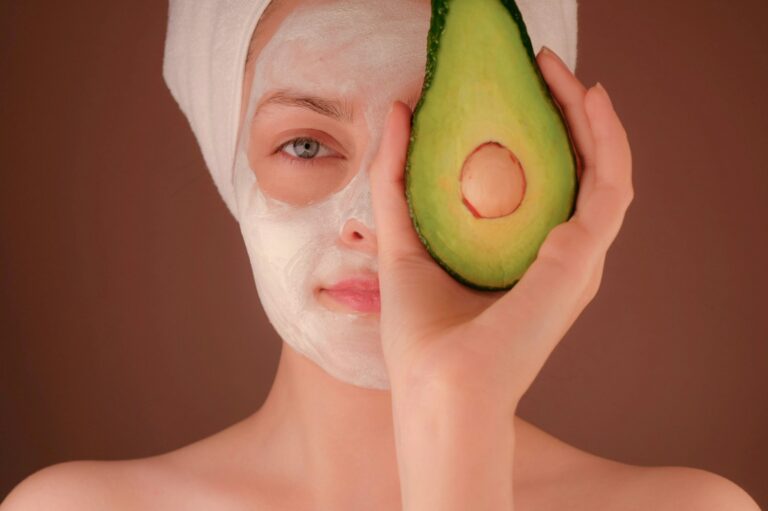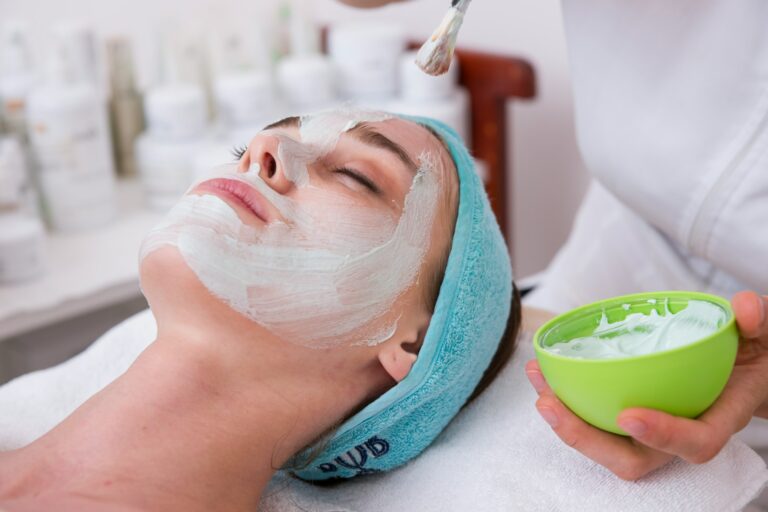Most people experience skin concerns at some point in their lives, and hyperpigmentation combined with an uneven skin tone can cause distress. In this blog post, you will learn about the factors that contribute to these skin conditions, such as sun exposure, hormonal changes, and inflammation. By understanding the underlying causes, you can take proactive measures to improve your skin’s appearance and regain your confidence. Whether it’s through skincare routines or professional treatments, you can achieve a more balanced complexion that reflects your unique beauty.
The Biology of Skin Discoloration
How Melanin Production Affects Skin Tone
Melanin, the pigment responsible for your skin color, is produced by special cells known as melanocytes. These cells are primarily located in the basal layer of the epidermis. The more melanin your skin generates, the darker your skin tone is likely to be. Your body produces melanin in response to various factors such as sun exposure, hormonal changes, and even inflammatory responses. For instance, long sun exposure can boost melanin production, leading to tanning, but in some cases, this can also cause unevenness, resulting in sun spots or hyperpigmentation in specific areas.
In certain situations, an overproduction of melanin can lead to areas of hyperpigmentation, such as melasma or post-inflammatory hyperpigmentation, both of which are common skin conditions. Melasma, often triggered by hormonal changes during pregnancy or with the use of contraceptives, appears as brown patches, mainly on the face. On the other hand, post-inflammatory hyperpigmentation occurs after an injury or inflammatory skin condition, where the damaged area darkens as part of the healing process.
The Role of Genetics in Hyperpigmentation
Your genetic makeup plays a significant role in determining how your skin responds to various stimuli that can lead to hyperpigmentation. Some people possess genes that predispose them to produce more melanin than others. For instance, individuals with naturally darker skin tones often have a higher baseline level of melanin and may experience different patterns or degrees of hyperpigmentation compared to those with lighter skin. This genetic variability affects not just pigmentation levels but also susceptibility to conditions like melasma and post-inflammatory hyperpigmentation.
Family history can provide insights into your inclination toward skin discoloration. If you have relatives who experience consistent pigmentation issues, you may be at higher risk as well. Beyond visible characteristics, research indicates that skin physiology, including melanin distribution and its response to UV exposure, can also be inherited. Understanding your genetic predisposition can help inform your skincare choices and the preventive measures you might employ.
Triggers for Uneven Skin Tone
Environmental Factors: Sun Exposure and Pollution
Two of the most significant environmental factors contributing to uneven skin tone are sun exposure and pollution. Prolonged exposure to UV rays stimulates the production of melanin, leading to dark spots or patches on your skin. This process, known as solar lentigines, becomes more pronounced as you age, with individuals often noticing these imperfections starting in their mid to late twenties. Similarly, pollution can exacerbate skin issues; harmful particles can penetrate your skin and cause inflammation, resulting in a dull complexion or exacerbated hyperpigmentation. The combination of these elements makes protecting your skin vital.
- Minimize direct contact with the sun by using broad-spectrum sunscreen daily.
- Wear protective clothing such as hats and sunglasses when outdoors.
- Consider using skincare products that contain antioxidants to combat pollution damage.
Thou must prioritize your skin’s health by implementing protective measures against these triggers to maintain an even tone.
Lifestyle Choices: Diet, Stress, and Skincare Habits
The role of your lifestyle choices in maintaining an even skin tone cannot be underestimated. A diet high in refined sugars and unhealthy fats can lead to increased inflammation in your body, which in turn affects your skin’s appearance. Stress is another culprit; elevated cortisol levels can disrupt your skin’s natural balance, leading to breakouts and uneven pigmentation. Lastly, the effectiveness of your skincare routine plays a crucial role in managing hyperpigmentation. Consistent use of products enriched with vitamin C, retinoids, and gentle exfoliants can help brighten your complexion and target dark spots.
By incorporating a balanced diet rich in vegetables, fruits, and healthy fats, alongside an effective skincare routine, you set the foundation for healthier skin. This holistic approach not only addresses underlying issues but also empowers you to take charge of your skin’s appearance and overall health. Focus on making small, sustainable changes that can lead to noticeable improvements over time, as maintaining consistent habits is truly key.
The Psychological Impact of Skin Imperfections
Emotional Consequences of Hyperpigmentation
The emotional burden of hyperpigmentation can significantly affect your overall well-being. Many individuals experience feelings of self-consciousness and lowered self-esteem due to the visibility of dark spots or uneven skin tones. You might find yourself hesitating to engage in social situations or avoiding photographs, fearing that your skin imperfections will overshadow your personality or accomplishments. Studies have shown that individuals with visible skin conditions often face anxiety and even depression, with surveys indicating that nearly 67% of people report feeling less confident because of their skin issues.
Moreover, this issue is not merely superficial; it can lead to a negative self-image that seeps into other aspects of your life. An individual’s perception of their skin can create a cycle of avoidance behaviors, where you may avoid looking in mirrors or receiving compliments, reinforcing feelings of inadequacy. Over time, this can affect your relationships, job performance, and quality of life, creating a sense of isolation and despair that is unjustly tied to a visual characteristic.
Societal Standards of Beauty and Their Influence
Societal standards frequently dictate perceptions of beauty, often valuing flawless skin above all else. Media portrayals and advertising campaigns consistently glorify individuals with clear, even complexion, leaving little room for diversity in skin tones and imperfections. You might feel tremendous pressure to conform to these ideals, which can exacerbate feelings of inadequacy if your skin doesn’t fit the mold. Studies suggest that social media further amplifies these effects, with younger individuals especially prone to comparison and discontent as they scroll through filtered images that represent an often unattainable standard.
This relentless exposure to idealized beauty contributes to a collective psyche that not only undervalues real skin conditions but also fosters a culture of judgment. The notion that “beauty is skin deep” may not ring true when shallow judgments are made based on appearances alone. You could experience a profound conflict between your inherent value and societal validation, leading to a struggle for self-acceptance amidst prevailing beauty norms. Acknowledging these influences can help you navigate personal feelings towards your skin and encourage a healthier mindset about beauty in all its forms.
Navigating Treatment Options
Topical Treatments: What Works and What Doesn’t
For those battling hyperpigmentation and an uneven skin tone, many find solace in topical treatments. Ingredients like hydroquinone, retinoids, and vitamin C have garnered significant attention for their effectiveness. Hydroquinone, a powerful skin-lightening agent, can reduce dark spots when used regularly, but its potency comes with potential side effects like irritation or, paradoxically, additional pigmentation if overused. Retinoids, on the other hand, accelerate cell turnover, which can help fade pigmentation over time. Combining these treatments with a broad-spectrum sunscreen is vital, as sun exposure can exacerbate existing pigmentation and counteract your efforts.
However, not all topical solutions offer the same promise. Agents like kojic acid and azelaic acid have shown some success in lightening hyperpigmented areas, but their results are often slower and less pronounced. Some natural remedies, such as licorice extract and niacinamide, are making the rounds in skincare circles and can yield results, especially for mild cases. You’ll want to approach these options with realistic expectations and possibly consult with a dermatologist to tailor a regimen suited specifically to your needs.
Professional Interventions: Lasers, Peels, and Injections
If topical treatments don’t deliver the results you desire, professional interventions may be the next step. Laser treatments, such as fractional lasers, target specific pigmentation while leaving surrounding skin intact, promoting quicker recovery and uniformity in skin tone. Chemical peels, on the other hand, use acid formulations to exfoliate the upper layers of the skin, facilitating the shedding of pigmented cells and promoting new cell turnover. Depending on the concentration used, peels can vary in depth and impact, so understanding your skin type is key before proceeding. Injections, like those containing hyaluronic acid or other fillers, can also help by restoring lost volume and providing a temporary brightening effect, although they aren’t a direct method for treating pigmentation.
Professional-grade interventions can deliver significantly faster results compared to over-the-counter treatments, often producing noticeable changes in just a few sessions. However, it’s vital to consult with a certified dermatologist to craft a plan that aligns with your specific skin concerns and goals, ensuring that your skin remains healthy, safe, and beautiful throughout the process.
Preventive Measures for Lasting Radiance
Building a Holistic Skincare Routine
Your skincare routine plays a vital role in preventing hyperpigmentation and maintaining an even skin tone. Start by incorporating products with active ingredients such as vitamin C, known for its brightening properties, and niacinamide, which helps improve skin texture and reduce discoloration. Using gentle exfoliants, like AHAs and BHAs, can also assist in removing dead skin cells, further promoting a radiant complexion. Daily cleansing and moisturizing tailored to your skin type will help keep your skin barrier healthy and resilient against environmental aggressors.
Consistency is key when it comes to a holistic skincare approach. Gradually introduce new products and allow your skin time to adjust. Pay attention to how your skin reacts, and make changes as needed. Be open to incorporating hydrating serums, calming ingredients like aloe vera, and nourishing oils into your routine to help combat dryness and promote a balanced complexion. Tailoring your regimen to your unique skin needs can yield impressive results over time, ensuring you maintain that coveted glow.
The Importance of Sun Protection in Preventing Further Discoloration
Daily sun protection is non-negotiable for anyone concerned about hyperpigmentation. Exposure to UV rays increases melanin production, exacerbating existing dark spots and uneven tone. A broad-spectrum sunscreen with an SPF of at least 30 should be your go-to, applied generously each morning and re-applied every two hours when spending time outdoors. Even on cloudy days or during winter, UV rays can penetrate the skin, making it important to integrate sun protection into your daily routine.
Choosing a sunscreen that suits your skin type is equally important. For oily skin, opt for a lightweight gel or lotion, while those with dry skin may benefit from cream-based formulations. Additionally, consider products that include physical blockers like zinc oxide or titanium dioxide for effective protection. Investing in sun protection not only guards against further discoloration but also helps prevent early signs of aging, enhancing the overall quality of your skin for years to come.
Summing up
From above, you can see that understanding hyperpigmentation and uneven skin tone is vital for achieving a balanced, radiant complexion. This condition can arise from various factors, including sun exposure, hormonal changes, and skin injuries. By identifying the underlying causes specific to your skin type, you can tailor your skincare routine effectively. Whether it’s through the use of targeted treatments, sun protection, or lifestyle adjustments, you have the power to improve your skin’s appearance steadily.
Moreover, paying attention to your skin’s needs and being consistent with your skincare regimen can yield significant results over time. A routine that includes gentle exfoliation, hydration, and treatment options known to combat hyperpigmentation will help you gain control over your skin’s tone and texture. By empowering yourself with knowledge about hyperpigmentation, you can take proactive steps towards achieving clearer, more even-toned skin, enhancing not only your appearance but also your confidence.







